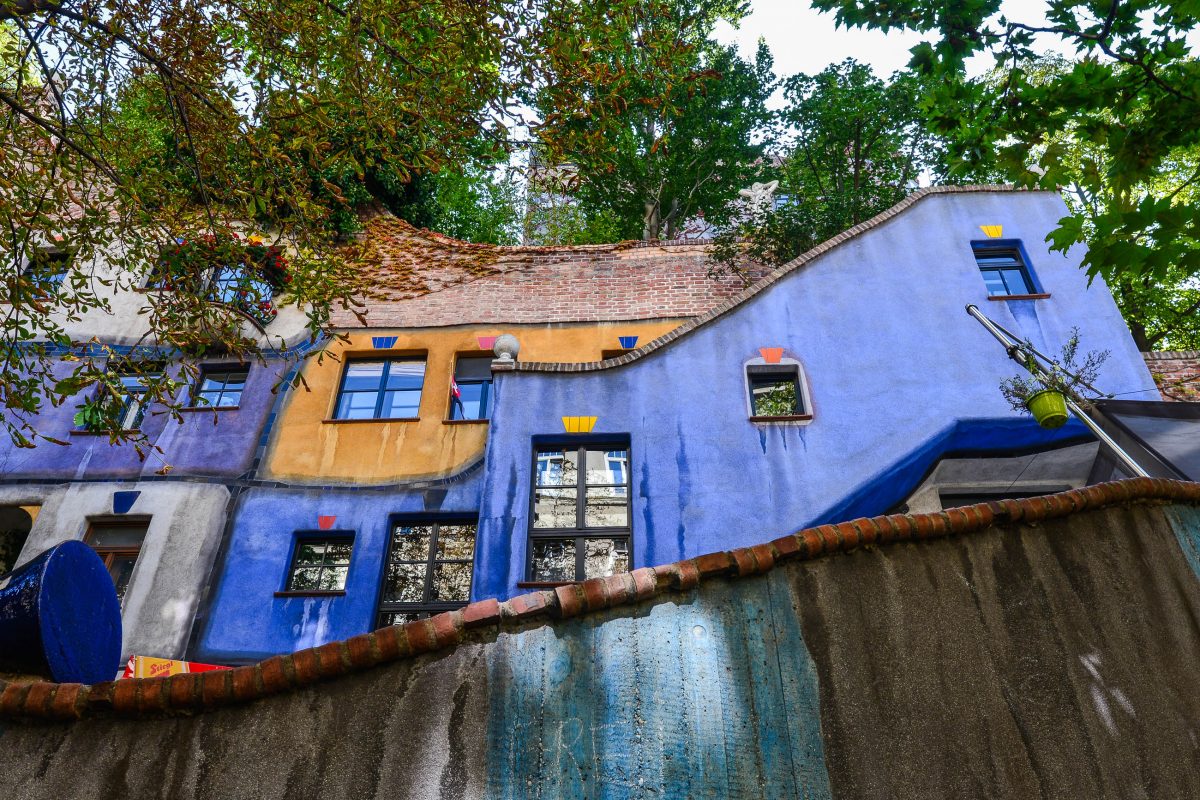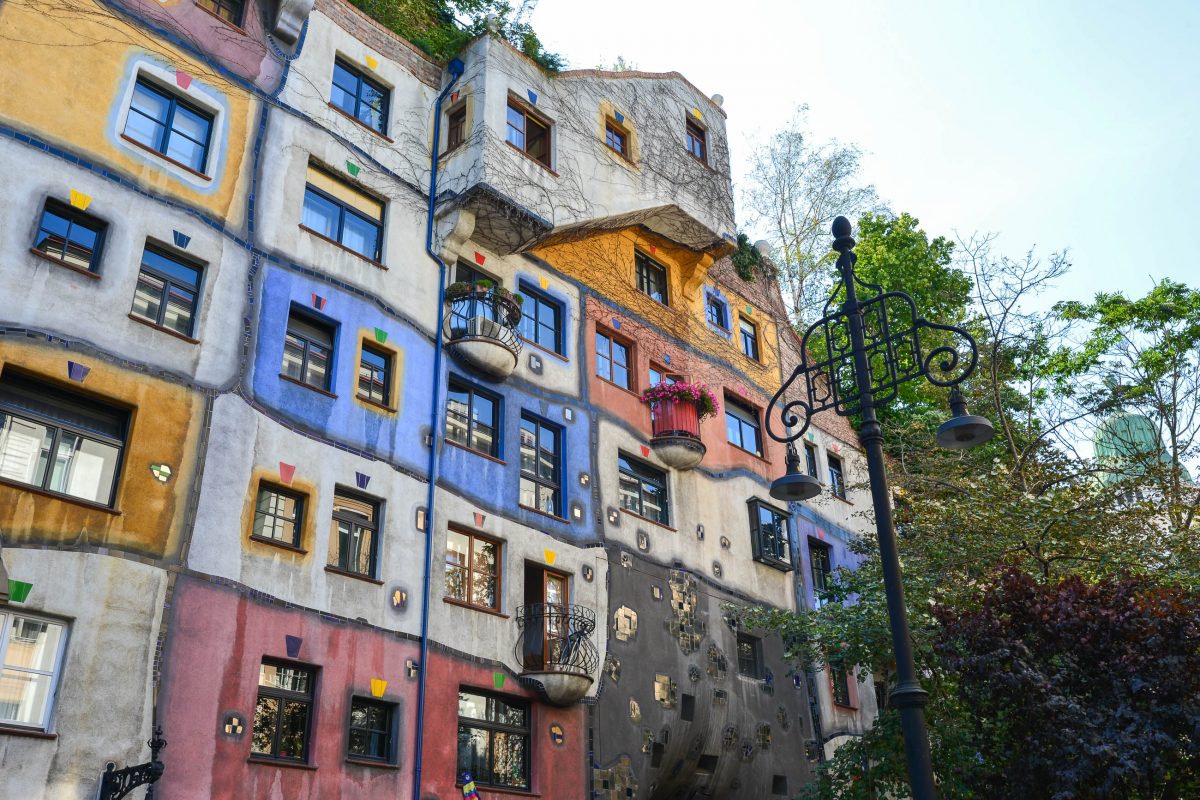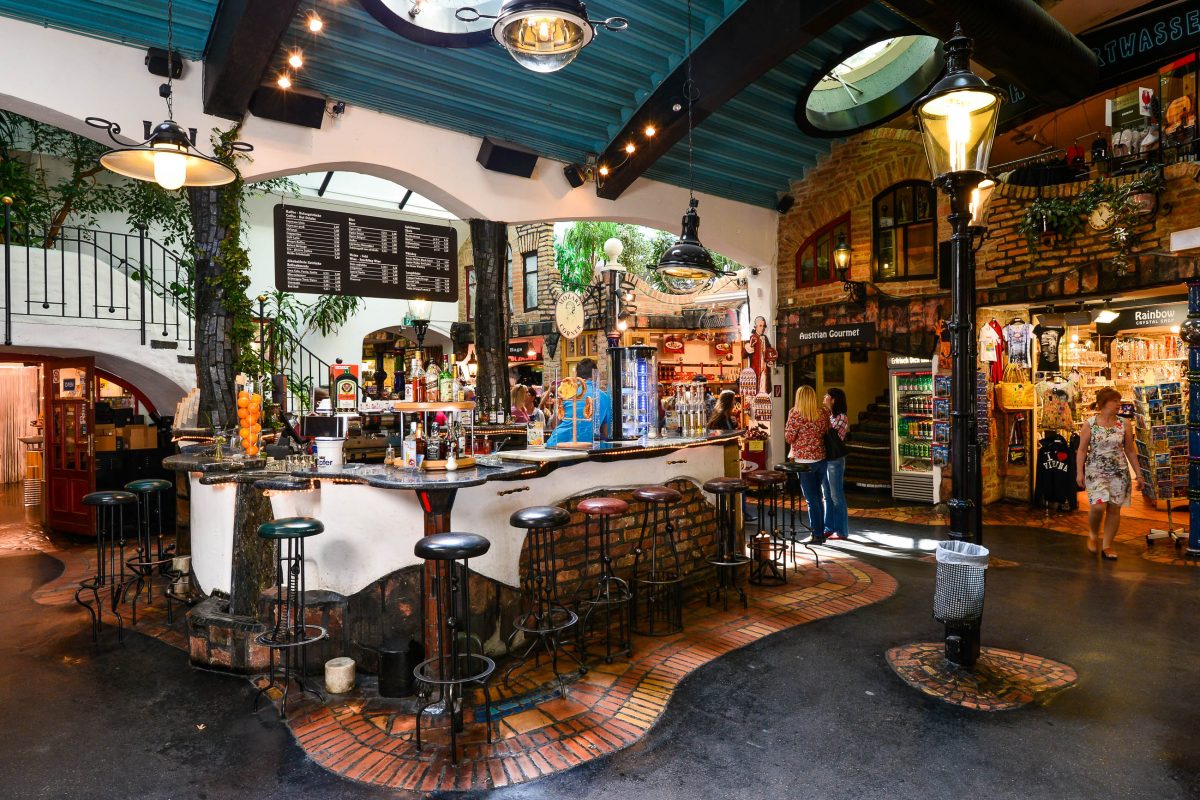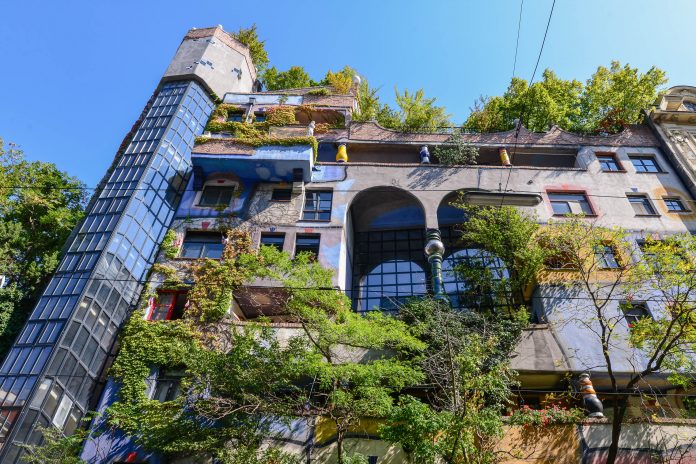Die farbenprächtige Fassade und das außergewöhnliche Interieur des Hundertwasserhauses in der Wiener Kegelgasse wurde komplett vom berühmten Künstler Friedensreich Hundertwasser gestaltet.
Das Hundertwasserhaus im dritten Wiener Gemeindebezirk zählt zu unseren Top 10 Sehenswürdigkeiten von Wien und ist das wohl meistbesuchte Wohnhaus Österreichs. Aus aller Welt strömen Besucher in die Kegelgasse im Zentrum von Wien, um den farbenprächtigen Bau zu bestaunen.
Wie auch bei der Gestaltung der Wiener Fernwärme und des KUNST HAUS WIEN hat sich der österreichische Künstler Friedensreich Hundertwasser hier verewigt.
Inhaltsverzeichnis
BILDER: Hundertwasser-Haus in Wien
Fotogalerie: Hundertwasserhaus in Wien
Entstehung des Hundertwasserhauses
In Zusammenarbeit mit dem österreichischen Architekten Josef Krawina entstand das Hundertwasserhaus von 1983 bis 1985. Die Stadt ließ den beiden kreativen Köpfen damals völlig freie Hand.
1981 schied Krawina allerdings aufgrund von Unstimmigkeiten bei der Fassadengestaltung aus dem Projekt aus, und Hundertwasser erhielt fortan Unterstützung vom Architekten Peter Pelikan.
Das Ergebnis kann sich sehen lassen und ist heute international bekannt. Hundertwasser selbst soll 1986 über sein Werk gesagt haben „Dieses Haus ist meine Seele!“
Typisch Hundertwasser: Sogar der Boden ist schief

Schon von weitem fallen die geschwungenen Linien, die farbige Fassade und die bunt umrahmten Fenster des Hundertwasserhauses ins Auge. Auch im Inneren gibt es kaum gerade Linien, die Böden in den Gängen weisen Unebenheiten und schiefe Flächen auf. Alles Charakteristika, die sofort an den bekannten Künstler denken lassen.
Gewusst? Die Fassade des Hundertwasserhauses entsprang nicht zu hundert Prozent dem kreativen Geist des Künstlers, denn jeder Bewohner des Hauses darf die Außenwand seiner Fenster selbst mit den lebendigsten Farben und Formen schmücken.
„Horizontale Flächen gehören der Natur“

Ein weiteres Merkmal der Werke von Hundertwasser ist die ausnahmslose Begrünung von horizontalen Flächen, denn seiner Meinung nach sollte der Mensch der Natur so wenig wie möglich Platz wegnehmen. Und so ist das „Haus für Menschen und Bäume“ nicht nur eine Augenweide, sondern fungiert mit über 200 Bäumen und Sträuchern auf Balkonen und Dachterrassen als grüne Oase mitten in der Stadt.
Besuch des Hundertwasserhauses
Aus Rücksicht auf die Bewohner kann das Hundertwasserhaus nur von außen besichtigt werden. Im Erdgeschoß befindet sich das Wiener Kaffeehaus „Kunst und Café“, in dem Hundertwasser in einem Video durch sein Werk führt. Gleich gegenüber befindet sich der Eingang zum Hundertwasser-Village.
Tipp: Wer mehr über den Künstler und seine Werke erfahren möchte, sollte das nur wenige hundert Meter entfernte KUNST HAUS WIEN besuchen. Dieses wurde ebenfalls von Hundertwasser gestaltet und beinhaltet außerdem eine dauerhafte Hundertwasser-Ausstellung.
Hundertwasser-Village

Nachdem der Besucherstrom des Hundertwasserhauses nicht abreißen wollte, wurde nach und nach der Ruf nach einer entsprechenden touristischen Infrastruktur laut. Diesem sollte das Hundertwasser-Village gerecht werden, das am 17. Juni 1991 eröffnet wurde.
Das „Village beim Hundertwasserhaus“ entsprang ebenfalls aus den Ideen von Friedensreich Hundertwasser und entstand in den Jahren 1990 und 1991 in einer ehemaligen Reifenwerkstatt. Auch hier gedeiht ein regelrechter Wald auf dem Dach, der mit 30 Bäumen, von denen manche 15 Meter hoch sind, vielen Tieren in der Wiener Innenstadt einen Lebensraum bietet.
Das Interieur des Hundertwasser-Village erinnert mit seinen verwinkelten Gängen an einen orientalischen Basar. Es lädt bei kostenlosem Eintritt ein, die innere Gestaltung eines von Hundertwasser konzipierten Gebäudes zu entdecken.
Weiterführende Links:





